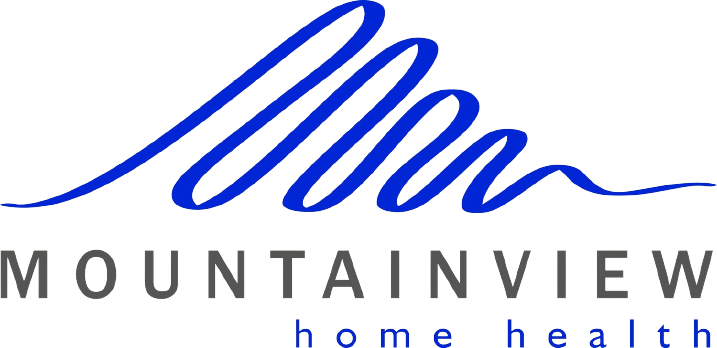Introduction;
‘SLP’ Definition: What is meant by the term ‘SLP’?
A specialist in diagnosing and treating a variety of speech, language, cognitive, and swallowing issues, a medical Speech-language Pathologist is an essential part of the health workforce. Patients with various neurological conditions, like brain injury, stroke, seizures, or cancer, are treated by them.
Explained below is the typical day (9 AM to 5 PM) routine and responsibilities of an SLP in any medical health facility, for example, hospitals or clinics;
Patients' Assessment & Allocation;
Opening of patient charts in the electronic medical system and scheduling SLPs to see the patients takes up the first portion of the day. Usually, a caseload of twenty to thirty patients is handled by two to three SLPs, and more recently, as many as forty individuals. Sometimes there is an outpatient video fluoroscopic swallow study (VFSS) to do in addition to the inpatient workload thrice a week.
Intensive Care Patients Re-Evaluation;
One of the core duties include going to the intensive care unit (ICU) to see a patient who may have either suffered a heart attack or something serious like that. During the cardiac arrest, he may have aspirated secretions, which meant that his saliva entered his lungs. As a result, he will be required a breathing tube for around ten days. Ian SLP is there to assess him and also to evaluate if the patient is ready or not to begin oral feeding. The care team is eager to learn the findings of the evaluation and accordingly administer treatment and care.
While an SLP is with the patient, his awareness begins to wane, he struggles to control his saliva, and his cough is quite weak when urged to clear his throat. Some oral care is given to wipe his lips and inform the nurse that he is still unable to swallow food. If his chart tells that oral medication has also been prescribed, the SLP pages the doctor to inform that the patient might not be ready for oral consumption for a few days. The doctor must now choose whether to remove the feeding tube and switch to a non-oral pharmaceutical regimen.
Initial Assessment of Swallowing;
This may be for a patient who underwent brain surgery to remove a blood clot by having burr holes made in her skull (a hematoma). At the bedside evaluation, the patient is awake and aware, has excellent oral control, and shows no signs of swallowing trouble. This looks fantastic! A standard texture diet order is placed, a chart notation is made, and then order is confirmed.
Heading To the Oncology Department;
In this department, the patient to examine is usually given a tracheostomy tube to assist in breathing since the patient has cancer at the base of the tongue. In order to assess the patient’s swallowing and ensure that he/she can use a one-way speaking valve on the trach tube to speak clearly, an SLP monitors the case. An observation on how food passes through mouth and throat using barium-infused food during his video fluoroscopic swallow study (VFSS) is also made by the SLP.
In this case, even though the patient will be receiving all of the prescribed nutrients through a GJ feeding tube that goes directly into the intestines, an SLP teaches swallowing exercises to the patient so that he/she can practice them while undergoing cancer treatment.
The patient learns the Masako, the Mendelssohn maneuver, and some jaw range-of-motion exercises from the SLP. In a week, after the radiation therapy has begun, an SLP has to see the patient once or twice more.
Lunch Break;
Not just a meal, but also a meeting! Maybe an acute treatment team meets with the inpatient rehab screener once or twice a week as the SLPs have lunch. The SLPs inform the screener of the patients whose names they believe will be able to complete the rehab program's requirements as well as those who might not. To unwind from the stresses of the day, an SLP eats, chats with the other therapists, or plays some video game on the smartphone.
Heading Back To the Medical Areas;
The first phone maybe is from radiology, informing of a fresh inpatient VFSS order. An SLP has to set it for later in the afternoon so he/she can first see the patient and get a sense of what to expect. The SLP makes a call to the ordering medical doctor (MD) and requests a second order so that he/she may see the patient at the patient's bedside before the VFSS.
For example, if an SLP saw a patient with dementia for a swallowing evaluation, and put him/her on the baseline textures that were being consumed in the care home, then the SLP has to ensure that he/she examines the patient’s pureed solids and thin fluids. The SLP has to see if the patient is tolerating the baseline diet, according to that day’s checks with nursing, chart reading, intake record review, and observation as the patient finishes the meal.
Bedside Evaluation & Consultation;
If an SLP discovers the patient spitting out foamy secretions when he/she goes to visit at the patient’s bedside. Instead of oropharyngeal dysphagia, the SLP might describe symptoms typical of an esophageal condition (swallowing difficulty in the mouth or throat). Food feels stuck in the mid-sternal region, the patient experiences Globus sensation (the sensation that food is lodged down in the throat), and it might be the case because of undergoing two prior esophageal dilations, in which the esophagus and stomach are connected and extended to make it easier for food to pass.
The SLP has to phone the physician to recommend to postpone the VFSS and schedule an appointment with the gastroenterologist (GI physician) in its place. The SLPs advice is essential and admirable here and the doctor consents to request another SLP evaluation if the patient exhibits oropharyngeal dysphagia after seeing the GI. Then the SLP needs to draft notes and make the VFSS cancellation call to the radiology department.
Treatment for Stroke;
Let’s talk about stroke victims who have dysphagia. Reviewing the VFSS from the day before allows the SLP to uncover specific therapy approaches for the patient by entering the swallowing deficiencies identified during the exam of Dysphagia Therapy Application. The Chin Tuck against Resistance (CTAR) exercise is the only one usually prescribed in this situation despite receiving recommendations for four other exercises. Tongue sweeping is practiced to get rid of any slight food pocketing in the cheek.
Practiced therapy or exercise in patients with aphasia include saying numbers, days of the week, spouse’s name, and some simple sentences. An SLP works to improve speech skills in the patients.
Palliative Support & Care for Seriously Ill Patients;
If there is a fresh order on the screen, even after the list for the day is finished, the SLP has to respond. A short glance at the chart reveals the patient’s stats. If the patient is in with end-stage chronic obstructive pulmonary disease (COPD) and that he/she has orders for both NPO (nothing by mouth) and full comfort care (i.e., no invasive procedures to be administered on the patient). It's time for the SLP to put on the "comfort care" hat instead of the "rehab hat." When discussing end-of-life care, it is appreciated that the SLP put emphasis on quality of life. It’s good to have an attendant of the patient in the room as well.
After performing a quick bedside swallow assessment, the SLP might prescribe "comfort feeding" (feeding done just for enjoyment rather than for nourishment) and "aspiration" (food or liquid entering the lungs), and then discuss further the best way to balance the risk and benefit for the patient. Basically, the SLP is looking for the diet that will satisfy the patient’s appetite while being the least risky. When the patient s alert enough to swallow, the SLP lets him/her take a few bites of a pureed meal or sips of thin liquid.
Conclusive Remarks;
Usually any day for the SLP is filled with a wide range of patients and illnesses. The SLP’s works with each patient individually has to be taken into account in terms of the complexity of his/her medical conditions, which makes working in an acute situation challenging for any SLP, but also incredibly intriguing.
This article has just given an overview for any new reader or for even someone acquainted with the medical field about the daily routine of the SLPs along with their role, their responsibilities towards both patients and staff, types of patients they are meant to work with and their essential requirement in any medical facility.



